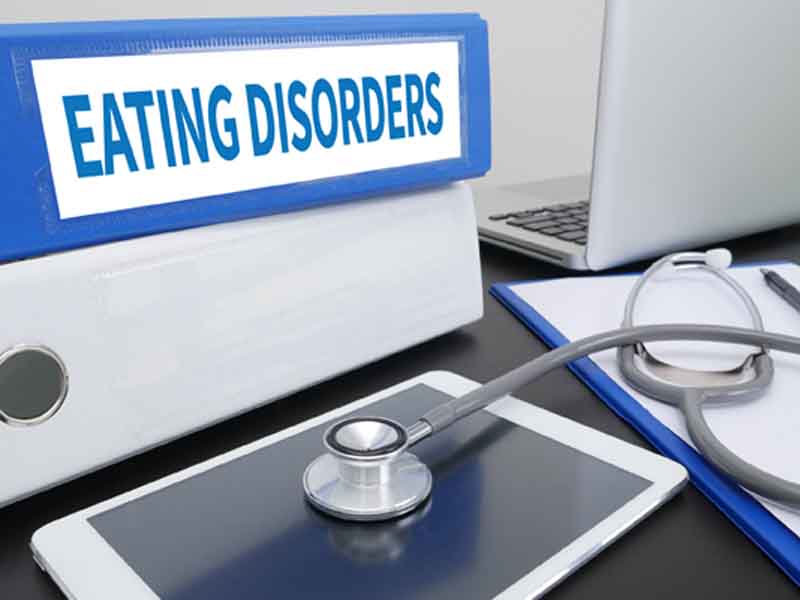Draft Recommendation Statement
USPSTF: Evidence Lacking on Screening for Eating Disorders
October 29, 2021, 1:22 p.m. News Staff — On Oct. 19, the U.S. Preventive Services Task Force published a draft recommendation statement and draft evidence review on screening for eating disorders in adolescents and adults.

Based on the available evidence, the task force has concluded that the current evidence is insufficient to assess the balance of benefits and harms of screening for eating disorders. This is an “I” recommendation, and applies to individuals age 10 years or older who have no signs or symptoms of eating disorders.
“Eating disorders can cause serious harm to people’s mental and physical health,” said Lori Pbert, Ph.D., a member of the task force, in a press release. “The challenge is that we don’t have the evidence to tell us whether or not it’s beneficial to screen people without signs or symptoms in primary care. It is important that clinicians be aware of the signs and symptoms of eating disorders, listen to any patient concerns about eating, and make sure that people who need it get help.”
According to the National Institute of Mental Health, eating disorders can be experienced by people of all ages, racial and ethnic backgrounds, body weights and genders. While they typically appear in adolescence or early adulthood, eating disorders may also develop during childhood or later in life. Evidence also suggests that the lifetime prevalence of eating disorders is higher in women than men and in adolescent girls than adolescent boys.
Story Highlights
Development of Draft Recommendation
While the USPSTF noted that it has published related recommendations on screening for depression in adults, and children and adolescents, interventions to prevent perinatal depression in pregnant and postpartum individuals at increased risk, behavioral interventions to prevent obesity-related morbidity and mortality in adults and screening for obesity in children and adolescents, the agency said eating disorders is a new topic for review. The task force also explained that it considers eating disorders important to address because of the toll they can take on patients and their families.
To develop the draft recommendation, the task force commissioned a systematic review to evaluate the evidence on the benefits and harms of screening for eating disorders in adolescents and adults; the accuracy of screening tools for eating disorders; and the benefits and harms of interventions for eating disorders that were screen-detected or not previously treated for populations and setting relevant to primary care.
The review consisted of English-language controlled studies o eating disorder screening or evaluation of interventions for screen-detected or previously untreated eating disorders and studies of screening test accuracy published through June 23, 2020, along with reference lists of retrieved articles and additional sources from outside experts and reviewers. A total of 56 studies were included in the review.
Findings
The task force found no studies that directly assessed the benefits or harms of screening for eating disorders.
Overall, screening tools were found to have adequate accuracy for detecting eating disorders among adults, with the SCOFF (Sick, Control, One, Fat, Food) Questionnaire the most common screening questionnaire used in this population. For detecting any eating disorder among adults, the SCOFF (cut point 2 or higher) had a pooled sensitivity of 84% and a pooled specificity of 80%.
In adolescents, however, the task force determined that the accuracy of screening questionnaires was unclear. Only two studies evaluated this population. In one study, the screening tool used had a sensitivity of 100% and a specificity of 27%; in the other, the screening tool had a sensitivity of 73% and a specificity of 78%.
Forty-one trials in the review examined the benefits of interventions to improve eating symptom disorders. Compared with inactive control, psychological interventions such as guided self-help and group therapy were found to be effective in reducing eating disorder symptom severity and depressive symptoms among referred populations. Pharmaceutical interventions such as lisdexamfetamine and topiramate also were found to be effective in reducing eating disorder severity, but were associated with various adverse effects such as dry mouth, insomnia and paresthesia.
The USPSTF also noted several gaps in the existing literature that could be filled by additional research. Specifically, the task force called for additional studies that would focus on health outcomes; analyze the potential harms of screening; address screening in adolescents, adult males and more diverse patient populations; and use consistent definitions and reference standards to better define eating disorder conditions.
“We need more evidence on whether and how screening for eating disorders can improve people’s health,” said Michael Silverstein, M.D., M.P.H., a member of the task force. “In particular, we need more studies that address the impact of primary care screening on health and quality of life for people who do not have signs, symptoms or concerns about eating disorders.
Next Steps
The USPSTF will accept comments on the draft recommendation statement and draft evidence review until 11:59 p.m. ET on Nov. 15. All comments will be considered as the task force prepares its final recommendation.